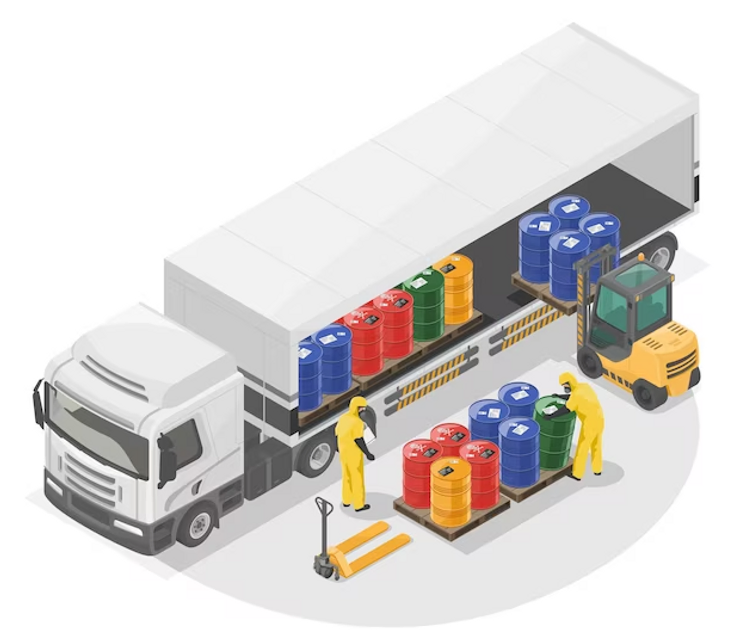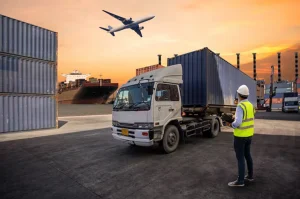Transporting hazardous cargo across international borders is a complex and highly regulated process. It refers to the transportation of materials that can pose significant risks to health, safety, and the environment. As global trade continues to grow, understanding the intricacies of hazardous cargo transport is essential for businesses and logistics professionals. Here’s what you should know about handling and transporting hazardous cargo internationally:
Understanding Hazardous Cargo
Hazardous cargo, also known as dangerous goods, includes a wide range of materials that can be flammable, explosive, toxic, corrosive, or otherwise harmful. They are classified according to their characteristics and the risks they present. The primary categories include:
-
Explosives (Class 1)
-
Gases (Class 2)
-
Flammable Liquids (Class 3)
-
Flammable Solids (Class 4)
-
Oxidizing Substances and Organic Peroxides (Class 5)
-
Toxic and Infectious Substances (Class 6)
-
Radioactive Material (Class 7)
-
Corrosive Substances (Class 8)
-
Miscellaneous (Class 9)
Each category requires specific handling and transportation procedures to mitigate the risks associated with these materials.
Regulatory Framework
Shipping hazardous materials internationally is controlled by strict regulations what ensure safety and reduce risks. The primary international regulations include:
-
The International Maritime Dangerous Goods (IMDG) Code: governs the transport of hazardous materials by sea.
-
The International Civil Aviation Organization’s (ICAO) Technical Instructions: regulate the transport of dangerous goods by air.
-
The European Agreement concerning the International Carriage of Dangerous Goods by Road (ADR) : covers road transport in Europe.
-
The Regulations concerning the International Carriage of Dangerous Goods by Rail (RID) : pertain to rail transport in Europe.
Compliance with these regulations is mandatory, and failure to adhere can result in severe penalties, including fines and legal action.
Key Considerations for Transporting Hazardous Cargo
Classification and Identification
Proper classification and identification of hazardous cargo are crucial. This involves determining the correct class of material and labeling it accordingly. Accurate documentation, including Safety Data Sheets (SDS), is essential to providing information about the material’s properties and handling requirements.
Packaging and Labeling
Hazardous materials are packaged according to regulations to make sure they don’t pose any risks during transport. Packaging must be robust and resistant to the material’s properties. Also packages should be labeled with the appropriate hazard symbols and handling instructions.
Documentation
Thorough documentation is a cornerstone of hazardous cargo transport. This includes:
-
Shipping Papers: Detailing the nature and quantity of the hazardous material.
-
Emergency Response Information: Providing instructions in case of an incident.
-
Certificates and Permits: Verifying compliance with regulatory requirements.
Training and Certification
Personnel which involve in the process must undergo specialized training. This training covers handling procedures, emergency response, and compliance with regulatory requirements. Certification ensures that personnel are qualified to manage the risks associated with hazardous materials.
Transportation Modes and Routes
Choosing the appropriate mode of transport and route is vital for the safe delivery of hazardous cargo. This includes the characteristics of the material, the distance, and the availability of necessary infrastructure and emergency response capabilities along the route.
Sea Transport
Sea transport is ideal for large volumes of hazardous cargo, offering cost-effective solutions for long-distance shipments.
Advantages and Disadvantages
Sea transport is cost-efficient and suitable for bulky cargo. However, it has longer transit times and may face delays due to weather conditions.
Specific Requirements
Compliance with the IMDG Code is mandatory, covering aspects like packaging, labeling, and stowage.
Air Transport
Air transport is the fastest method for hazardous cargo and is suitable for urgent deliveries.
Advantages and Disadvantages
The primary advantage is speed, while the main disadvantage is higher costs. Air transport also has strict weight and volume limitations.
Specific Requirements
Adherence to the IATA Dangerous Goods Regulations is crucial, ensuring safe packaging, labeling, and documentation.
Land Transport
Land transport includes road and rail options, offering flexibility and accessibility for hazardous cargo.
Advantages and Disadvantages
Land transport is versatile and can reach remote areas. However, it may encounter road restrictions and require careful route planning.
Specific Requirements
Road transport requires compliance with ADR regulations, while rail transport adheres to specific national and international guidelines.
Emergency Preparedness
Preparation for emergencies is a critical aspect of hazardous cargo transport. This includes having contingency plans, emergency response teams, and equipment in place to handle incidents such as spills, leaks, or accidents.
International transport of hazardous cargo is a critical but challenging aspect of global logistics. By understanding the regulatory framework, key considerations, and best practices, businesses can ensure the safe and efficient movement of these materials. Proper handling, thorough documentation, and emergency preparedness are essential to mitigating risks and ensuring compliance with international standards.
Toptrans’ Services for Hazardous Cargo Transportation
At Toptrans, we understand that transporting hazardous cargo demands the highest levels of expertise, safety, and compliance. We’re dedicated to delivering exceptional transportation services, guaranteeing that your hazardous cargo are handled with the highest level of care and precision.
Why Choose Toptrans for Hazardous Cargo Transportation?
-
Expertise and experience: With eight years of experience in the industry, Toptrans has developed a deep understanding of the complexities involved in transporting hazardous materials. Our team of highly trained professionals is well-versed in the latest regulations and best practices, ensuring your cargo is in safe hands from start to finish.
-
Comprehensive Safety Protocols: Safety is our top priority. We adhere to stringent safety protocols and regulations set by international, national, and local authorities. Our fleet boasts modern safety features, and our team receives regular training to stay current with the latest safety protocols.
-
Customized Solutions: We recognize that each hazardous cargo shipment is unique. Toptrans offers customized transportation solutions tailored to meet your specific needs. Whether you require temperature-controlled environments, special handling equipment, or real-time tracking, we have the resources and expertise to accommodate your requirements.
-
Regulatory Compliance: Navigating the regulatory landscape for hazardous materials can be challenging. Our dedicated compliance team ensures that all necessary documentation, permits, and certifications are in place. We work closely with regulatory bodies to guarantee that your shipment complies with all applicable laws and guidelines.
-
Advanced Technology: Toptrans leverages advanced technology to enhance the safety and efficiency of our hazardous cargo transportation services. Our real-time tracking systems provide you with up-to-date information on the location and status of your shipment, giving you peace of mind and complete visibility.
-
Reliable and timely delivery: We understand the importance of timely delivery for your business operations. Our extensive network and logistics expertise ensure that your hazardous cargo reaches its destination safely and on time.
-
Exceptional Customer Support: Our dedicated customer support team is available 24/7 to assist you with any queries or concerns. From initial consultation to delivery, we are here to support you every step of the way, ensuring a seamless and stress-free experience.
Get in Touch with Toptrans!
Choosing Toptrans means you choose safety, reliability, and excellence. Contact us today to discuss your specific needs and learn how we can provide you with the best possible transportation solutions for your hazardous materials.








